Cover
Copyright
Credits
Foreword
About the Authors
About the Reviewers
www.PacktPub.com
Table of Contents
Preface
Chapter 1: Keystone – OpenStack Identity Service
Introduction
Installing the OpenStack Identity service
Configuring OpenStack Identity for SSL Communication
Creating tenants in Keystone
Configuring roles in Keystone
Adding users to Keystone
Defining service endpoints
Creating the service tenant and service users
Configuring OpenStack Identity for LDAP Integration
Chapter 2: Glance – OpenStack Image Service
Introduction
Installing OpenStack Image Service
Configuring OpenStack Image Service with OpenStack Identity Service
Configuring OpenStack Image Service with OpenStack Object Storage
Managing images with OpenStack Image Service
Registering a remotely stored image
Sharing images among tenants
Viewing shared images
Using image metadata
Migrating a VMware image
Creating an OpenStack image
Chapter 3: Neutron – OpenStack Networking
Introduction
Installing Neutron and Open vSwitch on a dedicated network node
Configuring Neutron and Open vSwitch
Installing and configuring the Neutron API service
Creating a tenant Neutron network
Deleting a Neutron network
Creating an external floating IP Neutron network
Using Neutron networks for different purposes
Configuring Distributed Virtual Routers
Using Distributed Virtual Routers
Chapter 4: Nova – OpenStack Compute
Introduction
Installing OpenStack Compute controller services
Installing OpenStack Compute packages
Configuring database services
Configuring OpenStack Compute
Configuring OpenStack Compute with OpenStack Identity service
Stopping and starting nova services
Installation of command-line tools on Ubuntu
Using the command-line tools with HTTPS
Checking OpenStack Compute services
Using OpenStack Compute
Managing security groups
Creating and managing key pairs
Launching our first cloud instance
Fixing a broken instance deployment
Terminating your instances
Using live migration
Working with nova-schedulers
Creating flavors
Defining host aggregates
Launching instances in specific Availability Zones
Launching instances on specific Compute hosts
Removing nodes from a cluster
Chapter 5: Swift – OpenStack Object Storage
Introduction
Configuring Swift services and users in Keystone
Installing OpenStack Object Storage services – proxy server
Configuring OpenStack Object Storage – proxy server
Installing OpenStack Object Storage services – storage nodes
Configuring physical storage for use with Swift
Configuring Object Storage replication
Configuring OpenStack Object Storage – storage services
Making the Object Storage rings
Stopping and starting OpenStack Object Storage
Setting up SSL access
Chapter 6: Using OpenStack Object Storage
Introduction
Installing the swift client tool
Creating containers
Uploading objects
Uploading large objects
Listing containers and objects
Downloading objects
Deleting containers and objects
Using OpenStack Object Storage ACLs
Using Container Synchronization between two Swift Clusters
Chapter 7: Administering OpenStack Object Storage
Introduction
Managing OpenStack Object Storage cluster with swift-init
Checking cluster health
Managing the Swift cluster capacity
Removing nodes from a cluster
Detecting and replacing failed hard drives
Collecting usage statistics
Chapter 8: Cinder – OpenStack Block Storage
Introduction
Configuring Cinder-volume services
Configuring OpenStack Compute for Cinder-volume
Creating volumes
Attaching volumes to an instance
Detaching volumes from an instance
Deleting volumes
Configuring third-party volume services
Working with Cinder snapshots Cinder snapshots
Booting from volumes
Chapter 9: More OpenStack
Introduction
Using cloud-init to run post-installation commands
Using cloud-config to run post-installation configuration
Installing OpenStack Telemetry
Using OpenStack Telemetry to interrogate usage statistics
Installing Neutron LBaaS
Using Neutron LBaaS
Configuring Neutron FWaaS
Using Neutron FWaaS
Installing the Heat OpenStack Orchestration service
Using Heat to spin up instances
Chapter 10: Using the OpenStack Dashboard
Introduction
Installing OpenStack Dashboard
Using OpenStack Dashboard for key management
Using OpenStack Dashboard to manage Neutron networks
Using OpenStack Dashboard for security group management
Using OpenStack Dashboard to launch instances
Using OpenStack Dashboard to terminate instances
Using OpenStack Dashboard for connecting to instances using a VNC
Using OpenStack Dashboard to add new tenants – projects
Using OpenStack Dashboard for user management
Using OpenStack Dashboard with LBaaS
Using OpenStack Dashboard with OpenStack Orchestration
Chapter 11: Production OpenStack
Introduction
Installing the MariaDB Galera cluster
Configuring HA Proxy for the MariaDB Galera cluster
Configuring HA Proxy for high availability
Installing and configuring Pacemaker with Corosync
Configuring OpenStack Services with Pacemaker and Corosync
Bonding network interfaces for redundancy
Automating OpenStack installations using Ansible – host configuration
Automating OpenStack installations using Ansible – Playbook configuration
Automating OpenStack installations using Ansible – running Playbooks
Index
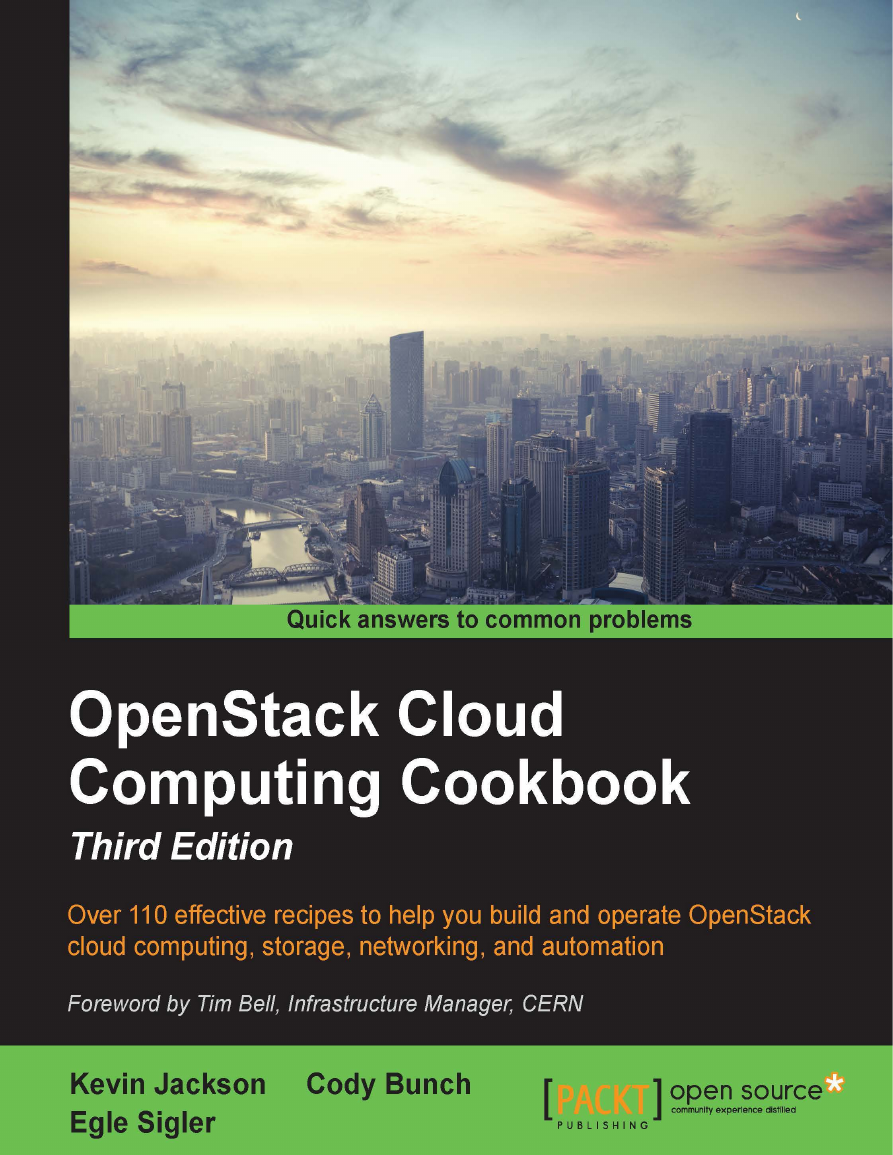
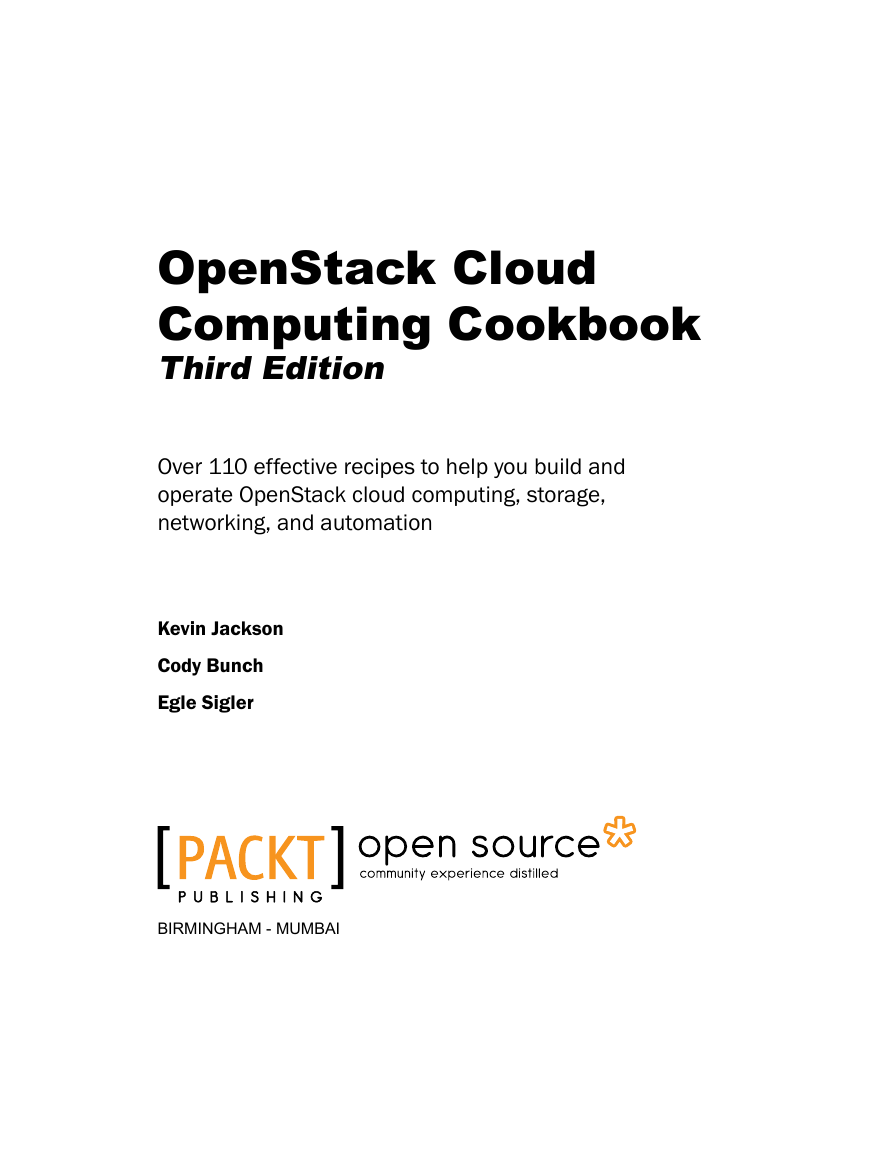
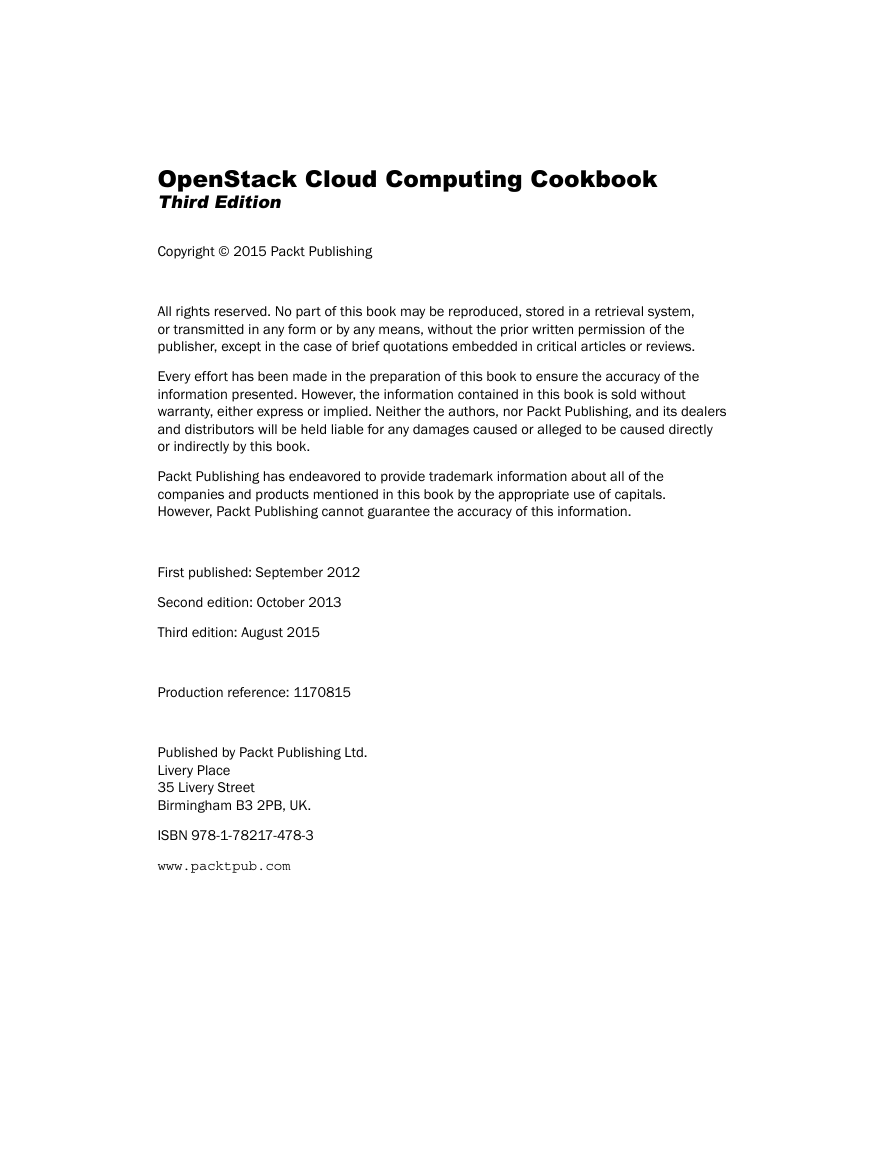
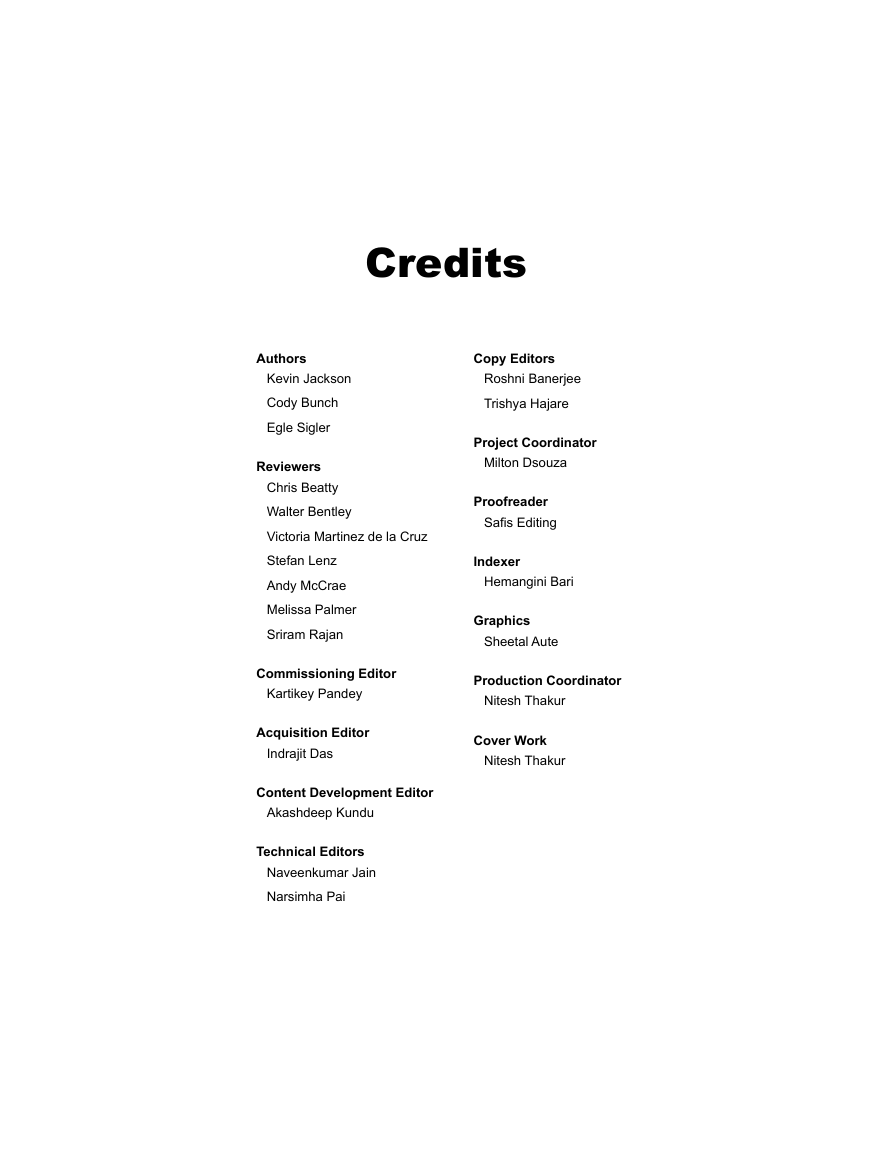


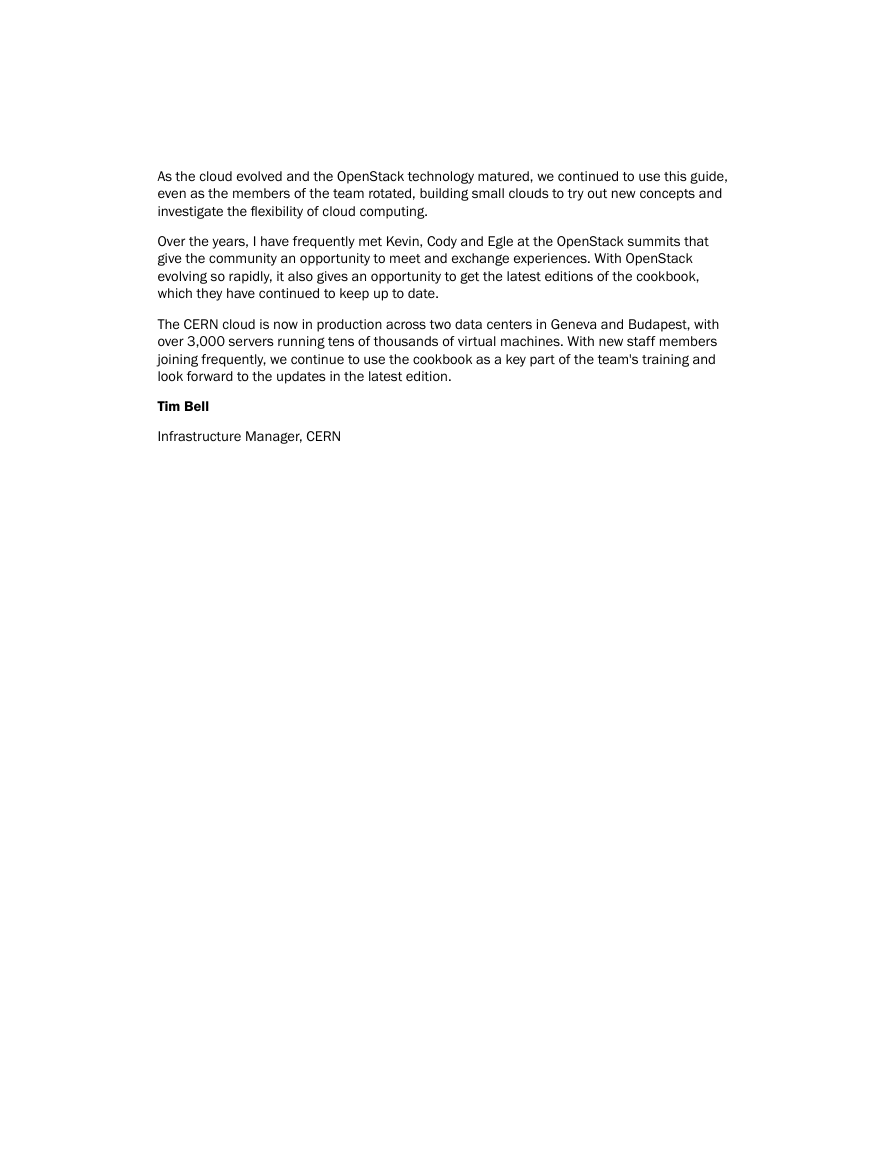









 2023年江西萍乡中考道德与法治真题及答案.doc
2023年江西萍乡中考道德与法治真题及答案.doc 2012年重庆南川中考生物真题及答案.doc
2012年重庆南川中考生物真题及答案.doc 2013年江西师范大学地理学综合及文艺理论基础考研真题.doc
2013年江西师范大学地理学综合及文艺理论基础考研真题.doc 2020年四川甘孜小升初语文真题及答案I卷.doc
2020年四川甘孜小升初语文真题及答案I卷.doc 2020年注册岩土工程师专业基础考试真题及答案.doc
2020年注册岩土工程师专业基础考试真题及答案.doc 2023-2024学年福建省厦门市九年级上学期数学月考试题及答案.doc
2023-2024学年福建省厦门市九年级上学期数学月考试题及答案.doc 2021-2022学年辽宁省沈阳市大东区九年级上学期语文期末试题及答案.doc
2021-2022学年辽宁省沈阳市大东区九年级上学期语文期末试题及答案.doc 2022-2023学年北京东城区初三第一学期物理期末试卷及答案.doc
2022-2023学年北京东城区初三第一学期物理期末试卷及答案.doc 2018上半年江西教师资格初中地理学科知识与教学能力真题及答案.doc
2018上半年江西教师资格初中地理学科知识与教学能力真题及答案.doc 2012年河北国家公务员申论考试真题及答案-省级.doc
2012年河北国家公务员申论考试真题及答案-省级.doc 2020-2021学年江苏省扬州市江都区邵樊片九年级上学期数学第一次质量检测试题及答案.doc
2020-2021学年江苏省扬州市江都区邵樊片九年级上学期数学第一次质量检测试题及答案.doc 2022下半年黑龙江教师资格证中学综合素质真题及答案.doc
2022下半年黑龙江教师资格证中学综合素质真题及答案.doc